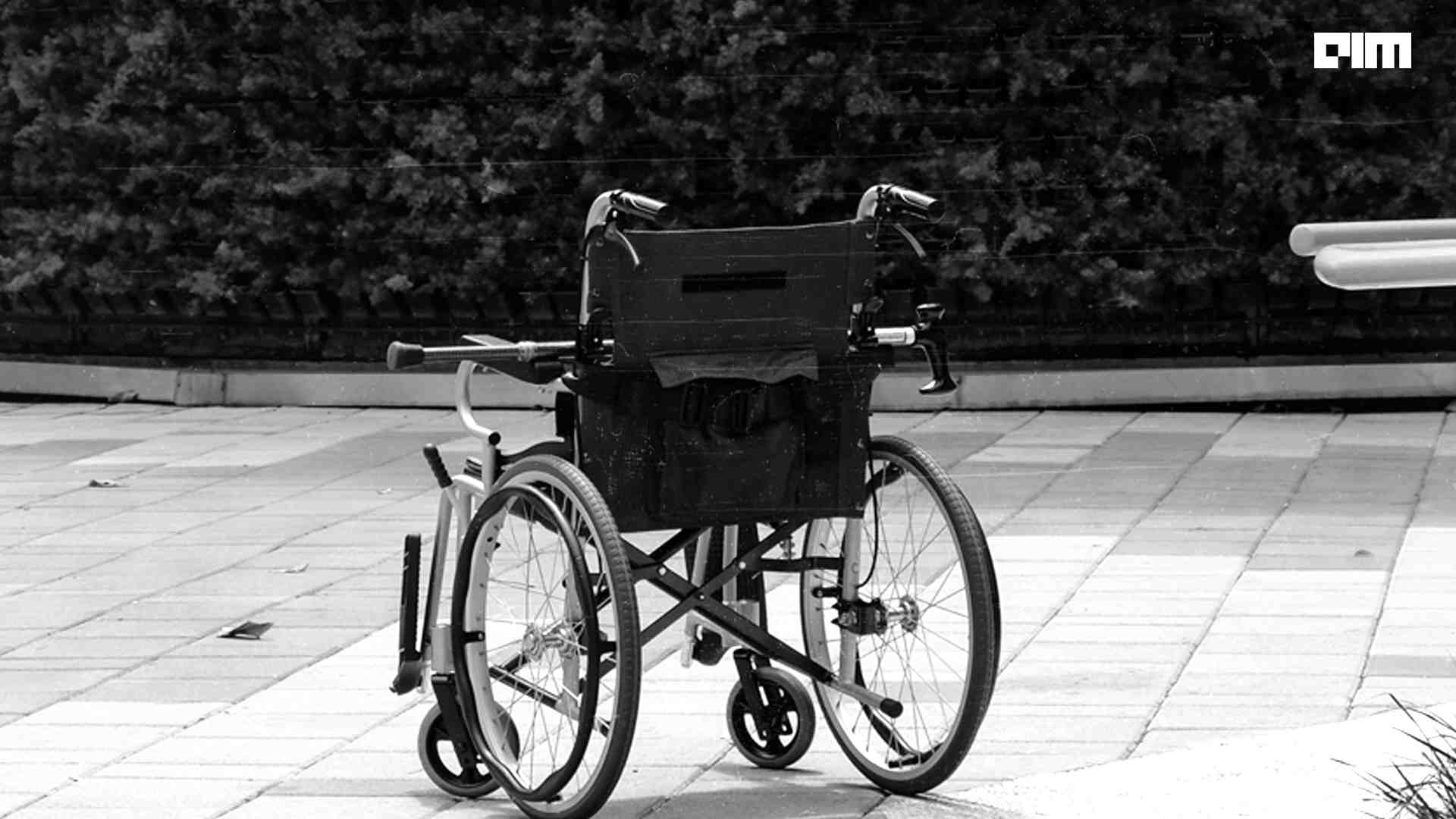AI to make life easier for the disabled in 2022

As per a 2011 WHO report, 15 percent of the global population lives with some form of disability. The global estimate for disability is on a rise with ageing population and the spread of chronic diseases, along with better techniques to measure disability. However, the good news is that with the advent of AI and other emerging technologies, the impact of such disabilities on a person’s daily functioning can be reduced to a great extent. A lot of organisations are venturing into this space and allotting resources and R&D efforts to tackle these challenges. We list some of the ongoing efforts in this space.
AI’s promise for the paralyzed
A research team led Grégoire Courtine, a professor at Swiss Federal Institute of Technology Lausanne (EPFL) and Jocelyne Bloch, a professor and neurosurgeon at CHUV, has developed a system that enables patients with a complete spinal cord injury to stand, walk, and perform activities like swimming, cycling and canoeing. According to the paper, the team has used sophisticated implants controlled by artificial intelligence software to stimulate the spinal cord region that activates the trunk and leg muscles. The stimulation algorithms are based on imitating nature. The team has used soft implanted leads that are to be placed underneath the vertebrae on the spinal cord. These implants can modulate the neurons and regulate specific muscle groups. We can activate the spinal cord by controlling these implants like the brain would do naturally to have the patient stand, walk, swim, or ride a bike.
The epidural electrical stimulation (EES) targets the dorsal roots of lumbosacral segments that restores walking in people with spinal cord injury (SCI). The team came up with an arrangement of electrodes targeting the ensemble of dorsal roots involved in leg and trunk movements that result in superior efficacy, restoring more diverse motor activities after the most severe SCI. They established a computational framework that informed the optimal arrangement of electrodes on a new paddle lead and guided its neurosurgical positioning. They also developed software supporting the rapid configuration of activity-specific stimulation programs that reproduced the natural activation of motor neurons underlying each activity. As part of the ongoing clinical trial, these neurotechnologies were tested on three individuals with complete sensorimotor paralysis. Within a single day, activity-specific stimulation programs enabled these three individuals to stand, walk, cycle, swim and control trunk movements.
Vision without eyes

Founded by Kür?at Ceylan, WeWALK is a combination of a smart cane design and a smartphone app. This year in February, Microsoft partnered with WeWALK to develop the technology further. The AI-powered WeWALK cane pairs with a free mobile navigation app that can detect overhead obstacles and alert its users with haptic feedback, inform about restaurants, stores, cafes that they are passing by. WeWALK takes commands in nine languages: English, French, Italian, German, Russian, Spanish, Portuguese, Turkish, and Arabic. The smart cane not just pairs with the phone, but can also be controlled with the touchpad on the cane.
With Microsoft, the team plans to develop the current technology and future offerings as they receive support towards developing AI Mobility (AIM)- technology. The next step of WeWALK’s journey is to roll out AIM technology in collaboration with Microsoft and introduce it to schools all around the world. “Our main goal is to help unlock the hidden potential of many more visually impaired people through cutting-edge tech. The hope is that with the use of a smart cane, users will be able to independently travel on their own anywhere, whether it’s down the street or across the world,” wrote Kür?at Ceylan on Twitter.
AI for ALS

After being highlighted as the 2021 Entrepreneur of the Year by the Association of Washington Business, Parrots Inc’s Polly has become quite famous. Designed in the shape of a parrot, Polly is powered by artificial intelligence is designed specifically to address the unique needs of the disabled community and their caregivers. Polly proves to be a great support for patients with ALS, MS, spinal cord injuries, and physical and neurological challenges as it can help anyone navigate their surroundings and help them communicate with ease. It can be attached to any wheelchair or bedside, tracks eye movement and uses ML to assist smart prediction of the user’s needs and wants. The wide-angle cameras capture a 360-degree view of the surroundings and display it on a Windows tablet to provide safe and efficient navigation. The AI Smart Prediction enables real-time start prediction. The bird also learns the user’s habits, predicts their needs, and communicates in real-time.
Swarajability
In India, too, the Indian Institute of Technology-Hyderabad (IIT-H) has developed Swarajability, a platform for the benefit of persons with disabilities like hearing impairment, visual impairment, and locomotive disorders. In collaboration with Kotak Mahindra Bank and Youth4jobs, the platform is India’s first AI triggered job platform for the disabled. It analyses the available information and suggests the required training needed for the concerned jobseeker.
Wrapping Up
AI is enabling people with disabilities to live independent life. The makers of technology are trying to understand their difficulties and figuring out ways to transform their lives and also the world into becoming an inclusive place.


